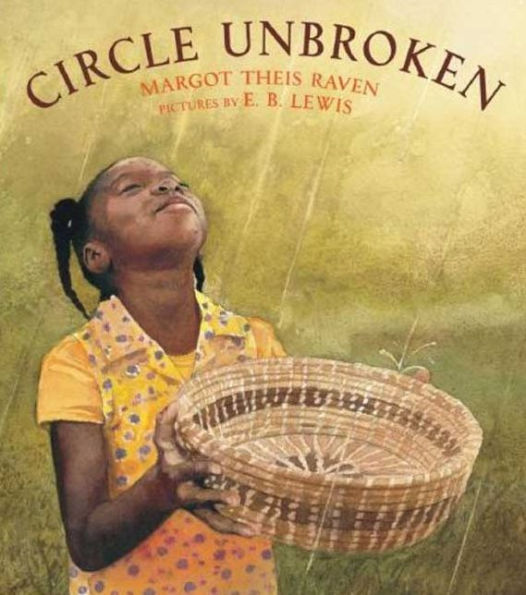Reading Group Guide
In Margot Theis Raven's Circle Unbroken: The Story of a Basket and Its People, a grandmother shares family stories with her granddaughter while demonstrating the techniques of making the famous Gullah coiled basket. In West Africa, Grandmother's "old-timey" grandfather lived on the riverbanks near rice fields where he learned the art of weaving baskets. When grandfather was captured and transported to South Carolina as a slave, he continued sewing baskets in the traditional way. Today, tourists to the Sea Islands in South Carolina can buy baskets woven by descendants of slaves brought to America. An author's note provides excellent details about the history of the sweetgrass "coil" or Gullah basket, its history on Africa's West Coast, and its journey to the Lowcountry of South Carolina and Georgia.
1. Students can research recent problems with the growth of urban areas and the availability of the reeds needed for basketmaking. What impact will this have on the continuity of the cultural traditions of the Sea Islands?
2. Research the Gullah dialect. Discuss how the slave trade led to the development of Creole languages blending English and African languages.
3. Have students find the Sea Islands, South Carolina, on a map and discover more about their geography. Construct a Venn diagram comparing the two types of islands: erosion remnant and barrier. Finally, the class can compare the geography of the Sea Islands with the West African countries of Sierra Leone and Senegal.
4. Have students try the different basketmaking techniques of plaiting and coiling. Compare and contrast the materials and techniques of traditional Native American and Gullah basketmaking. Linda Yamane's Weaving a California Tradition: A Native America Basketmaker (Lerner, 1997), with photographs by Dugan Aguilar, is a good resource.



